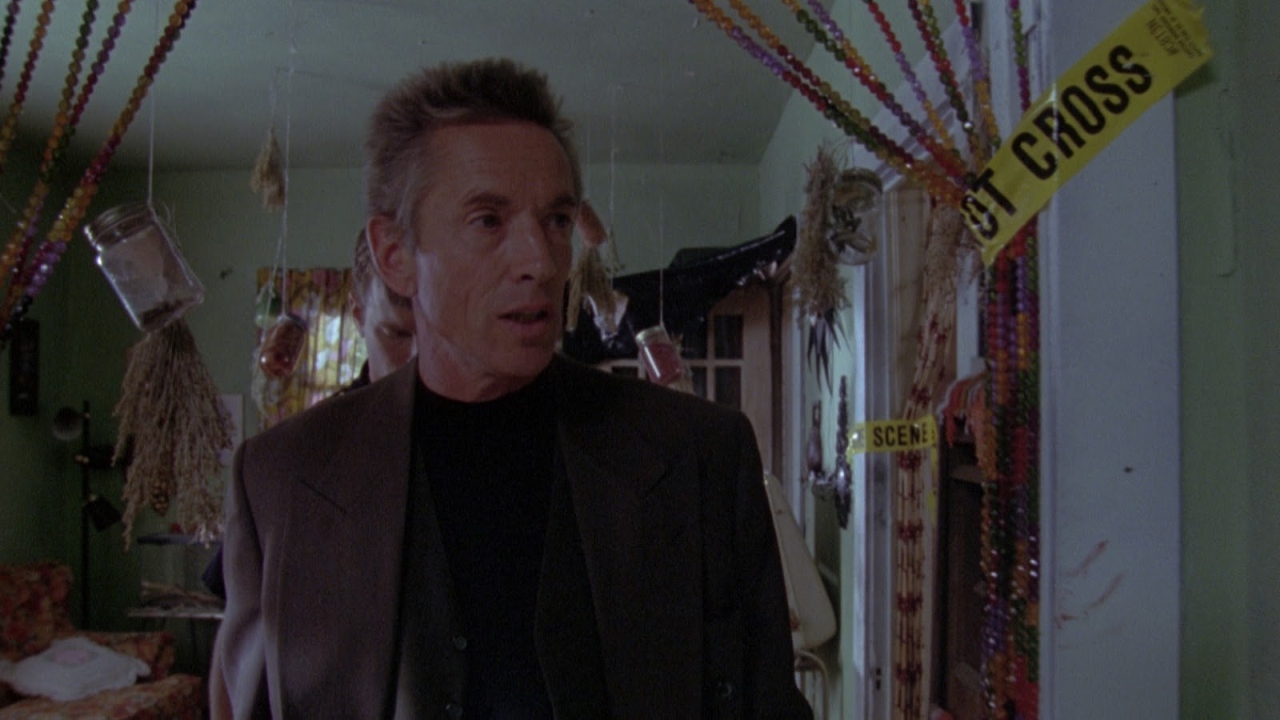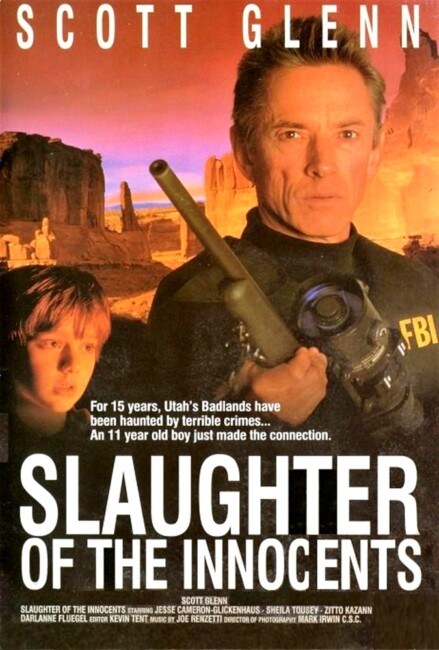Crew
Director/Screenplay – James Glickenhaus, Producer – Frank K. Isaac, Photography – Mark Irwin, Music – Joe Renzetti, Special Effects – FXWest (Supervisor – Tim Drnec), Makeup Effects – Atlantic West Effects (Supervisor – Gabe Bartalos), Production Design – Nicholas T. Prevolos. Production Company – Shapiro Glickenhaus Entertainment.
Cast
Scott Glenn (Steven Broderick), Jesse Cameron-Glickenhaus (Jesse Broderick), Sheila Tousey (Roxanne Lamar), Zitto Kazann (Mordecai Booth), Darlanne Fluegel (Susan Broderick)
Plot
Steven Broderick is an FBI agent who solves all his cases with the help of his son Jesse, a child prodigy. Both are certain that a man sentenced to die for ritual murders in Provo, Utah, is the wrong person, but the man is executed before Broderick can prove his case. Determined to find the real killer, Broderick traces connections to a Moabite sect who believe that Jesus Christ is returning to raise the dead and as a result keep their dead preserved. However, Jesse, trying to prove the case on his own, steals his father’s credit card and flies to Utah, straight into the killer’s lair.
Slaughter of the Innocents is one of the better among the horde of the imitators of The Silence of the Lambs (1991). Despite plot implausibilities that a dozen serial killers could hide among, director/writer James Glickenhaus writes a captivating and thoughtful script and does a good job of imitating the FBI procedural approach to hunting serial killers that The Silence of the Lambs (at least the book) did so well.
James Glickenhaus does perhaps owe too much of an obvious debt to Thomas Harris – the title of the film is intended to hold the same resonance as The Silence of the Lambs, and the sequence where the killer looks up Hieronymous Bosch’s Garden of Earthly Delights in a library reminds much of the killer’s obsession with William Blake in Harris’s Lambs precursor Red Dragon (1981).
James Glickenhaus never gets inside what motivates this particular serial killer but the film does end on a remarkable climax in the killer’s boneyard with the revelation of a Noah’s Ark of animal skeletons. The film is also techno savvy – there is a very amusing sequence with Scott Glenn trying to access his son’s computer for vital information only to have to go through the passwords that require him to recite his son’s Little League batting score and what he gave him for Christmas (even if such a sequence displays computer technology that is surely far in advance of the then average home PC).

The major problem with the film is the kid. James Glickenhaus clearly wanted to do a loving tribute to his own real-life son Jesse who plays the son in the film (and has appeared in two of Glickenhaus’s films since) but this unfortunately gets in the way of the film. The film’s major plausibility hole is turning the kid into a behavioural science genius. It seems ridiculous to suggest that Scott Glenn’s FBI agent has to rely on his son to solve his crimes – surely, the FBI have their team of behavioural experts and their own computer banks to analyse common factors in crimes? The climax where the kid simply walks into the killer’s hideout makes one realise that variants on the behavioural stupidity of people walking into darkened rooms where a killer is lurking did not die out with the 1980s slasher cycle.
On its own, the relationship between Scott Glenn and Jesse Cameron-Glickenhaus works well. There is a remarkably upbeat ending with Glenn and Cameron-Glickenhaus visiting the grave of the executed man where Glenn reflects on the meaning of life: “Remember after a shower how I taught you to shake the water off your head like a dog? Well, grandpa taught me that and someday you’ll teach your kid that. That part of grandpa and me and you will never die. Bodies, they have chemicals and when they die they go back into the Earth – you know like your goldfish that turned into the soil that turned into the apple you ate from our apple tree. The good things go on forever. That’s why you turned out such a good kid.”
Scott Glenn gives a much more animated performance than usual. Native American actress Sheila Tousey gives a cool and intelligently aloof performance as Scott Glenn’s FBI partner. As the killer, Zitto Kazann has been chosen for the remarkably wild-eyed and completely wired look he manages to convey.
James Glickenhaus also made the obscure horror film The Astrologer (1975); the cult ultra-violent vigilante film The Exterminator (1980); the action films The Soldier (1982), Shakedown (1988) and McBain (1991); the Jackie Chan film The Protector (1985); and the time travel film Timemaster (1995). Glickenhaus has also produced Maniac Cop (1988) and the Frank Henenlotter films Basket Case 2 (1990), Frankenhooker (1990) and Basket Case 3 (1992). Glickenhaus has now retired from filmmaking and works as a financier.


